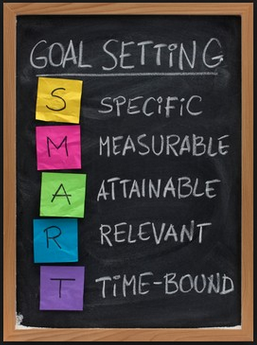The book, Intentional Interruption, points to the fact that most teams don't spend enough time on problem analysis, and therefore the most important problems or problem details are not analyzed well enough for substantial effort or result.
A dynamic goal setting process has the potential to strengthen collegial effort and result, and more importantly a dynamic goal setting process has the potential to significantly impact student learning.
What is a dynamic goal setting process? I propose the following steps:
1. Team members share potential goals. During the share, team members bring evidence to support that goal. Evidence could include student scores, student work examples, learning standards, family notes, student notes, and more.
2. Once all team members have shared meaningful, potential goals, the goals are systematically discussed with the following questions:
- Will this goal impact all learners in significant ways?
- Is this goal reasonable and attainable?
- Is this a good goal for our team--will everyone benefit, and is everyone invested?
- Is this goal sized right for the time and attention we can give it, or is this goal too big or too small with regard to impact, achievement, and effort?
- Does the goal fit the SMART goal process.
3. Once a goal is determined, then, using backwards design, the team should determine the goal path or map. A goal path or map might include the following steps:
- Define success criteria--how will we know we've achieved the goal?
- Determine learning groups and educator roles with regard to the goal.
- Determine goal roll-out including schedule, specific learning tasks, and time-line.
- Determine goal check-in points with regard to formative assessments, team share, goal review, and potential revision of process and groups.
4. At the end of the goal's time-line, measure the goal's success by assessing the success criteria determined at the start. Share measurements, reflect on success, and determine next steps. Perhaps this is the time to start the process again with a new goal.
Dynamic goal setting processes take time, but without that time the potential for team strength and learning gain is not met with the success possible.
